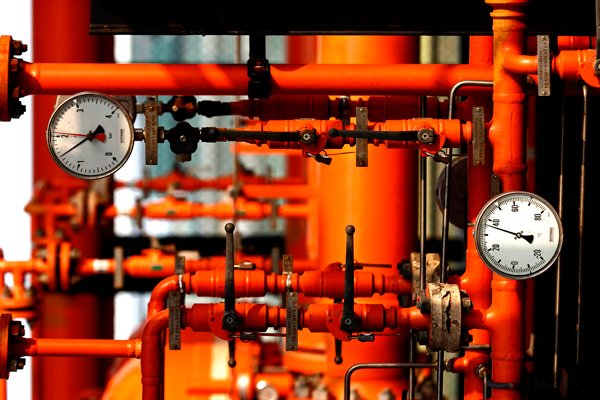The latest special report by the International Energy Agency (IEA), titled "Are We Entering a Golden Age of Gas", comes just as climate talks resumed in Bonn on 6 June in preparation for the Conference of Parties (COP) 17th Session in Durban later this year. The goal is a comprehensive and balanced outcome enabling the full, effective and sustained implementation of the United Nations Framework Convention on Climate Change (UNFCCC) through long-term cooperative action now, up to and beyond 2012, when the Kyoto Protocol expires.
The report indicates that the future of natural gas seems bright, but it also warned that a combination of factors leading to a high gas scenario must be met before the industry can usher in a "Golden Age of Gas".
These include ample availability of gas (much of it unconventional), which lowers average gas prices; implementation by China of an ambitious policy for gas use; lower growth of nuclear power due to renewed debate and uncertainties; and more use of natural gas in road transport.

Gas is the most benign of fossil fuels in terms of CO2 emissions, but the emissions trajectory in the IEA's latest high gas scenario is expected to stabilise atmospheric concentration of greenhouse gases at 650 parts per million (ppm), resulting in an average global temperature rise of over 3.5°C. The Intergovernmental Panel on Climate Change (IPCC) assessment reports have shown that a 2°C limit is needed to prevent runaway climate change. The UNFCCC Executive Secretary, Ms Christina Figueres, has also just reaffirmed the need for countries to commit themselves to a maximum global average temperature rise of 2°C, with further consideration of a 1.5°C maximum.
Potential of gas supply
The potential to expand the gas supply is undeniable. With a vast and wide geographically-dispersed resource base, gas reserves are estimated to last for another 120 years. And with the addition of unconventional gas such as shale, tight gas and coalbed methane (CBM), this could well exceed 250 years. However, the long-term potential for expanding gas supplies in any particular region or country is dependent on several preconditions. These include the size and quality of the resource base; energy policies that facilitate gaining access to gas resources; the availability of appropriate extraction technologies; and an effective marketplace that can ensure access and deliver flexible response at adequate price levels.
Furthermore, the need to respond to climate change brings into play a whole new dimension to energy policy formulation. Most countries, including Singapore, have broadened their energy strategies to go beyond economic competitiveness and encompass growing concerns over geopolitical uncertainties, the impact of climate change, as well as energy efficiency and conservation efforts. Many countries are also aggressively positioning their economies to capture the economic opportunities that may emerge from climate change mitigation.
An increased share of liquefied natural gas (LNG) in the global energy mix will inevitably affect energy trade, transportation and markets, especially in the Asia-Pacific region. China and India, both net importers of gas, will become major drivers of world gas demand in the coming decades, especially as the growing middle classes become more particular about air quality and environmental degradation.
Trade in gas to grow
International trade in natural gas is set to grow as several new LNG projects come online. The IEA estimates that LNG liquefaction capacity, at only 270 billion cubic meters (bcm) in 2008, could reach 450bcm in 2015 and 540bcm in 2020. Both long-distance pipelines and LNG projects are under development in Asia and Europe, but LNG re-gasification terminals are making faster progress.
About 76 percent of Singapore's electricity is generated from natural gas imported from Indonesia and Malaysia via four pipelines. Our first LNG re-gasification terminal, scheduled to be commissioned on Jurong Island in 2013, is expected to process 3 million tonnes per annum (Mtpa). This S$1.5 billion terminal will provide capacity for industrial growth and ensure greater energy security. It will also be integral to meeting Singapore's 2020 target of a 16 percent reduction in CO2 emissions below the "business as usual" level.
Natural gas production in the LNG-exporting non-OECD Asian countries is growing at an average annual rate of only 1.6 percent. Malaysia, Indonesia, and Brunei currently export LNG, with Papua New Guinea soon to become another regional LNG exporter in the near term. Despite reports of declining production from Malaysia and Indonesia's older fields, both countries plan to remain significant natural gas producers, consumers and traders in the region.
Recently, it was reported that Malaysia will bring in its first LNG imports in 2013. This means the world's No. 2 LNG exporter is likely to ship less LNG to top buyers in Asia. Analysts are yet unclear about what this might mean for Singapore.
Meanwhile, Indonesia, the world's largest LNG producer and exporter, with a reported total natural gas output of 74bcm in 2008 and an annual liquefaction capacity of 30 million tonnes, is expected to become the first country to produce LNG from coalbed methane (CBM) before 2014. The IEA expects Indonesia's total natural gas production to grow at an annual rate of 1.8 percent and reach 119bcm by 2035. Indonesia also aims to beat Australia in pioneering the necessary technologies.
Thailand currently imports natural gas via pipeline from Myanmar, and is among a growing group of new LNG buyers in Asia together with Singapore and Vietnam which are also trying to diversify their energy resources and enhance security. Thailand is where Southeast Asia's first LNG receiving terminal will be built, becoming operational by July 2011.
The IEA's high gas scenario, should it be realised, has the potential to redefine the geopolitics of natural gas and energy security, especially in Asia. Singapore must watch, in particular, the LNG terminal construction and trade in the region, and also continue to promote competitive markets and energy efficiency. A whole-of-government approach to tackling the growing complexity and strategic importance of natural gas today is needed.
By : Melissa Low, Energy Analyst at the Energy Studies Institute, National University of Singapore